2/2010
FLEXX Tronic Roll-Compensation And Active Wheelset-Steering From Bombardier
The demand for capacity is on the increase across all areas of transportation. Due to its flexibility as a mass transportation system and its environmental performance, rail transport in particular is gaining in significance. As a consequence, many countries are making major investments to meet future demand and for systems to become and remain competitive. Yet whilst this development appears very positive for the sector, it also poses significant problems, especially in densely populated European countries where new lines cannot easily be built and the capacity limitations of existing lines are already heavily exploited.
OMNEO - Bombardier's New Double Deck EMU
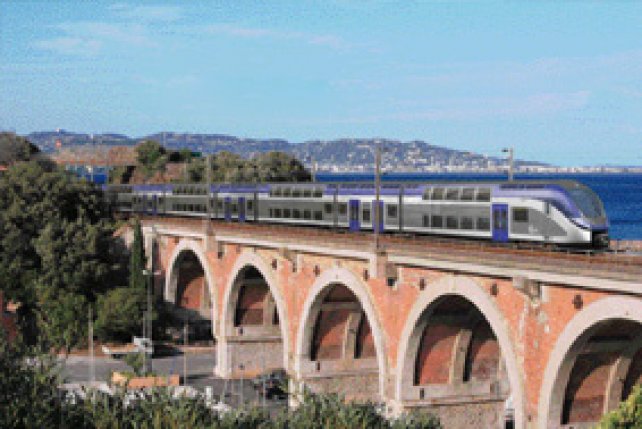
Bombardier recently developed a whole new family of double deck EMUs in response to requests by SNCF and the French Régions. Brand-named OMNEO by the manufacturer, and Regio2N by the Régions, they are designed for use on heavily patronised local and middle distance routes, and their design is the fruit of the extensive experience gained over the past few years in France with the AGC family of multiple units, and more recently with the Spacium EMU.
Côte d’Azur future vision - a photomontage of an OMNEO EMU crossing the Viaduc de la Rague near Cannes.
Photo: Bombardier Transportation
ZSSK's New Class 671 EMUs
On 30 December 2008, following competitive tendering earlier in the year, Slovakian state operator ZSSK awarded ŠKODA VAGONKA a contract to build ten Class 671 three-car, double deck, dual-voltage EMUs for use primarily on interurban domestic services radiating from Žilina on the lines to Košice and Trnava.
Class Ee 922 Electric Shunters For SBB
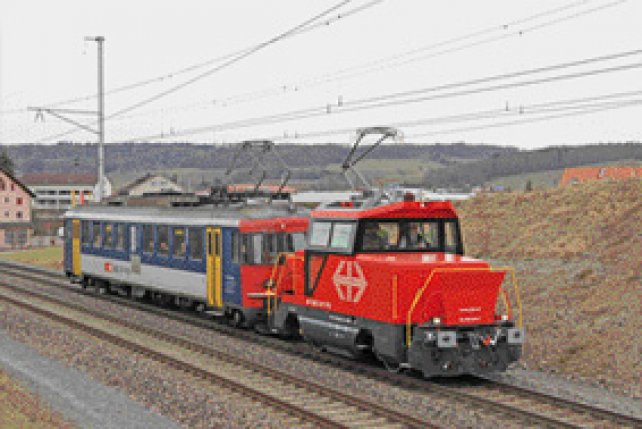
In December 2007 SBB awarded Stadler a 40 million CHF contract for 21 two-axle, dual voltage shunters as replacements for the veteran Class Ee 3/3s, which were built between 70 and 40 years ago. The first Class Ee 922 was delivered from Stadler’s Winterthur works on 3 July 2009, and created history by being the very first electric locomotive ever to have been completely developed and built there. Intended mainly for the shunting and marshalling of passenger stock, the locomotives are to be allocated to seven main stations on the SBB network.
Ee 922 004 near Marthalen on 25 February 2010. On that day the locomotive, which was already based at Basel depot, made a presentation run between Winterthur and Schaffhausen. To carry the invited guests electric railcar RBe 540 028 was provided, and cab rides were offered in rotation, change-overs of occupants of the cab taking place during station stops along the route. Another reason why the railcar was necessary was to provide ATP, whereas the Ee 922s do not have any train protection system. The RBe 540’s Integra and ZUB ATP was active, enabling to reach maximum speed of 80 km/h during the run.
Photo: Georg Trüb
Modernising PKP Cargo's Class ET22s
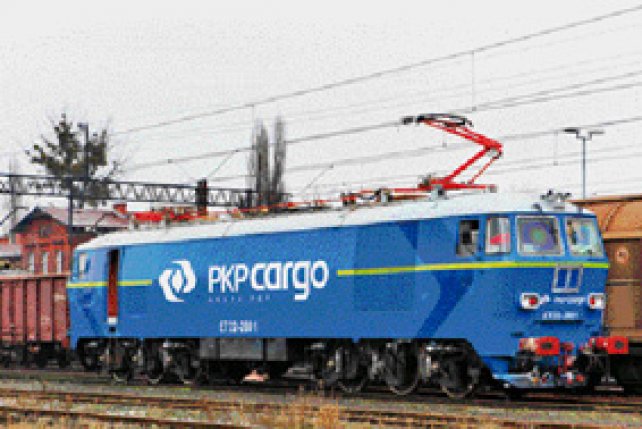
PKP’s Class ET22 Co’Co’ electrics, designed for freight duties, were built between 1969 and 1989 at the Pafawag works in Wrocław, an establishment which now belongs to Bombardier Transportation. Their type designation was 201E, and no fewer than 1,183 were outshopped. In December 2003 PKP Cargo awarded ZNLE Gliwice a contract to realise a prototype modernisation, the candidate selected for this being ET22-315, which at that time was based at Źurawica depot, near Przemyśl and the border with Ukraine.
ET22-2001 undertook its first test run, from Gliwice to Kędzierzyn-Koźle, on 5 March 2009, subsequently making trips as far as the border station at Chalupki, where it is seen in the accompanying photo on the 13th of the month. It wears the most recent PKP Cargo livery.
Photo: Tomáš Kuchta
China's Class HXD1B Electric Locomotives
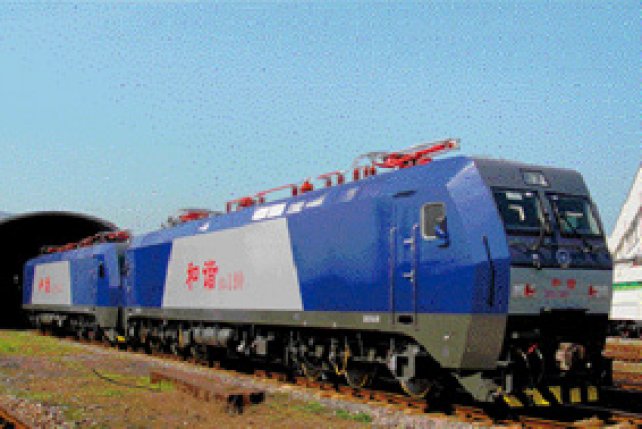
In R 6/09, pp. 50 - 59 we published a major feature on the new two-section Class HXD1 heavy freight electrics operated by Chinese Railways. These are not the only Eurosprinter-derived machines active in China. On 18 August 2007 the Ministry of Railways awarded the Zhuzhou Electric Locomotive Company a contract to build 500 Class HXD1B single-section Co’Co’s, which incorporate many HXD1 design features, and are rated at a 9,600 kW, or 1,600 kW per axle.
HXD1B0192 and 0251 at the ZELC works on 10 March 2010. On the far right can be seen part of one of the Class TM3 two-section electrics ordered by MoR in March 2008. These were designed and built entirely by ZELC, have a top speed of 140 km/h, and are employed on local passenger services. The first 14 of the 42 ordered were delivered in November 2009.
Photo: Slavomír Šťastný
And much more!
Cover of 2/2010
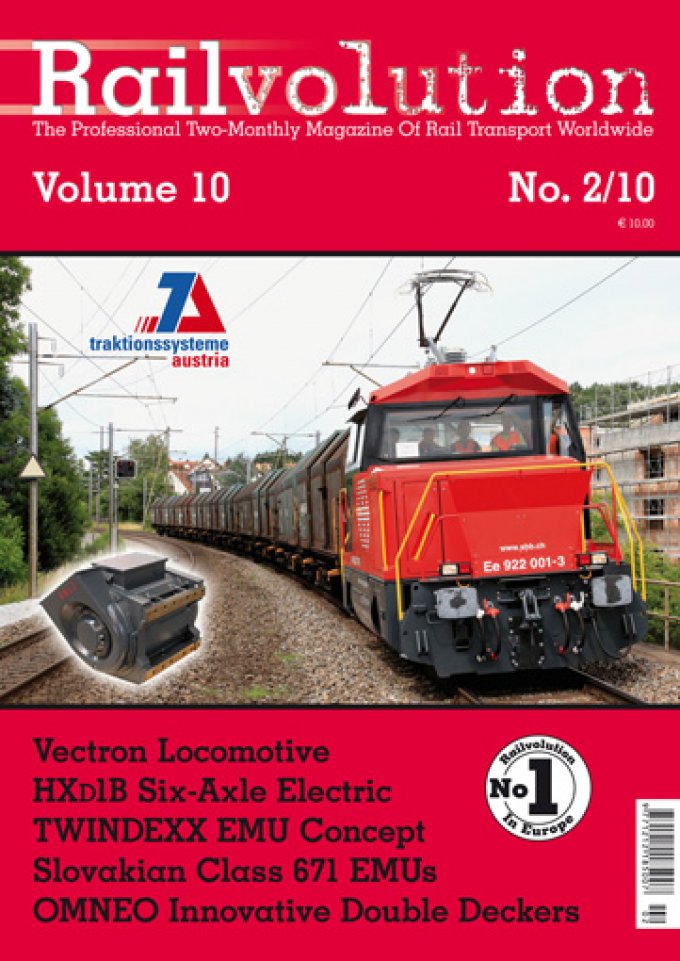
Poster
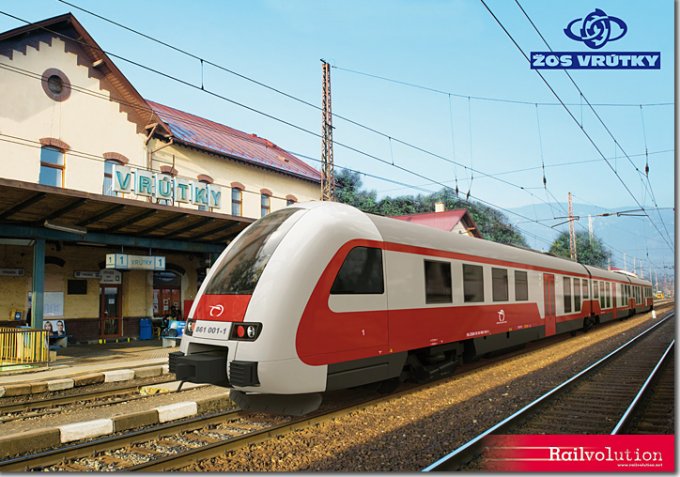
Features: a photomontage of a three-car, partly low floor, articulated Class 861 DMU from ŽOS Vrútky, ordered by ZSSK in April 2009
